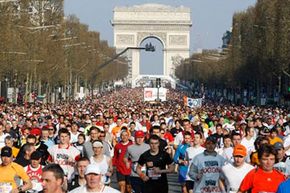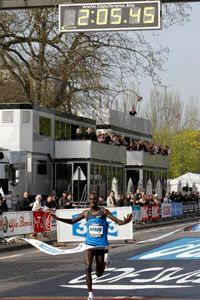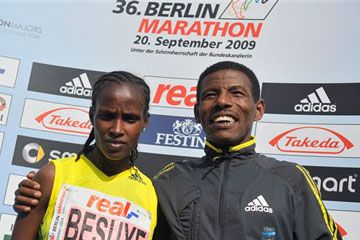If you're a marathon runner and you have an appreciation for stunning locales, then the Marathon de Paris may be for you. Known to English speakers as the Paris International Marathon, it's been run annually since 1977, although the original race dates back to 1896. Back then, fewer than 200 runners participated, and in the spirit of an elementary school field day, each person who finished the race in less than four hours received a medal. These days, the Paris Marathon is generally viewed as one of the top 10 marathons in the world, perhaps because of the cool spring temperatures in France and flat route that leads to opportunities for personal best run times.
In years past, the race had a reputation for a lack of public support, something marathoners count on to get them through the 26.2-mile (42.2-kilometer) course. But support has grown since 1977, and now the event is a genuine citywide party that brings out as many as 250,000 revelers to cheer on the field. During the race, more than 75 live music acts spread throughout the city and along the route to give race fans and runners something to enjoy besides the gorgeous scenery and plentiful red wine. You also can take advantage of the annual Breakfast Run, a 5K race held the morning of the marathon that takes runners past the famed Eiffel Tower and the Arc de Triomphe.
Advertisement
The Paris International Marathon also boasts the annual Marathon Expo, a three-day convention to promote the race and running in general. Racers pick up their bib numbers here, and the expo is open to the public. With more than 60,000 visitors per year, the Paris Marathon has something for both runners and race fans.
Check out the next page to learn how to enter the Paris Marathon.
Advertisement



